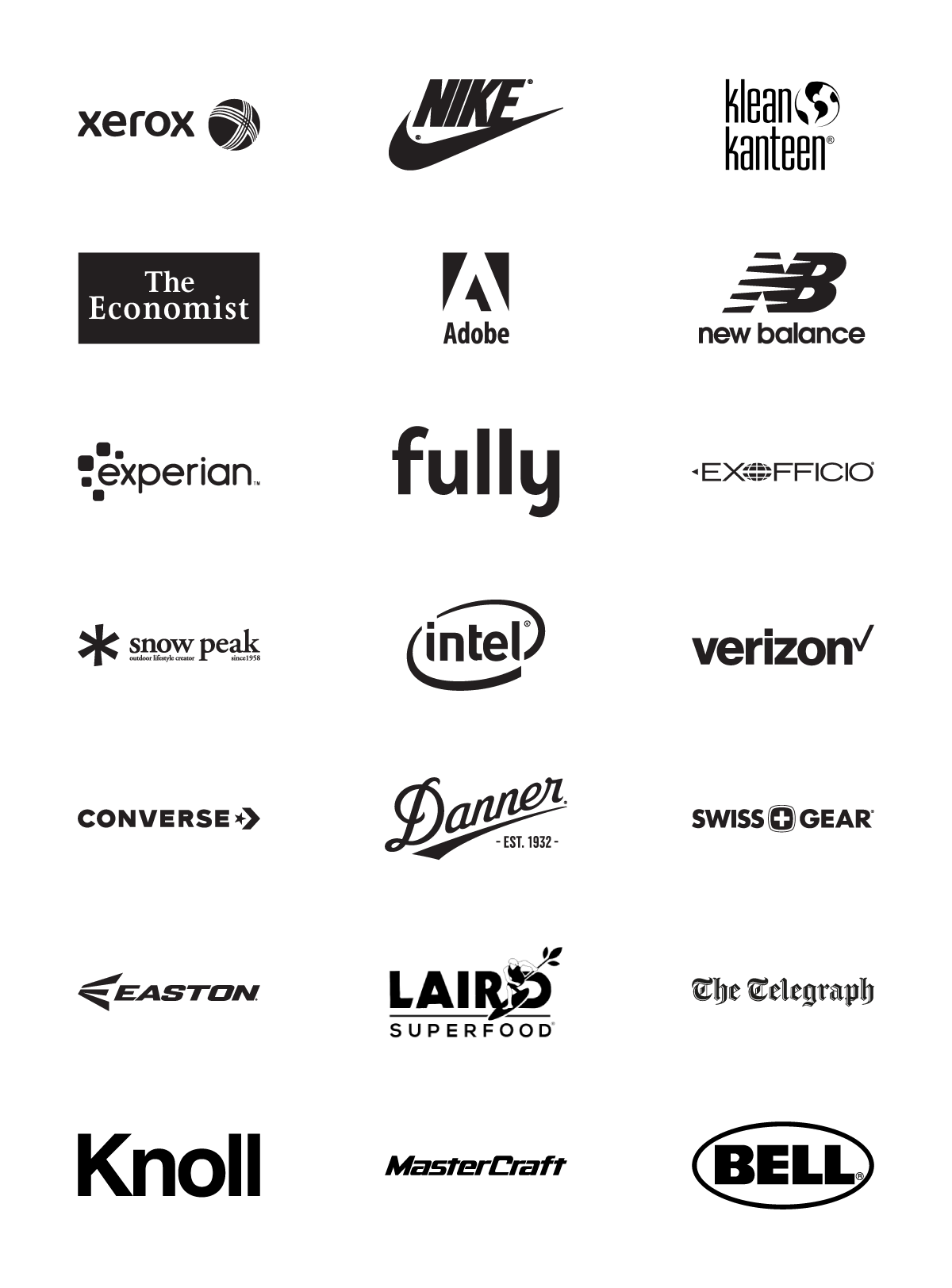
9 Reasons Why Brands Don’t Invest in CRO
While research shows that CRO is a good investment, some decision-makers still hesitate to take the next step. Here are nine reasons why people are afraid to say ‘yes’ to conversion rate optimization.
Over the last several years, conversion rate optimization (CRO) has become a ubiquitous term in the ecommerce world. In fact, 7 out of 10 marketers use conversion rate optimization results to inform their marketing decisions. But with about 78% of brands unsatisfied with their conversion rates, there’s still a great need for it.

Here’s the problem: with the increased awareness of CRO, there’s also been an increase in skepticism surrounding its effectiveness.
We get it. With the high price point and difficulty in measuring short-term or immediate results, CRO can appear to be a risky investment, but we’re here to put that notion to rest. If you’re one of the many still unsure about CRO, we’re writing this for you.
The goal of this article isn’t to sell you on our services. It’s to identify and address the misunderstandings surrounding CRO that hold companies back from investing.
We’ll walk you through the nine most common reasons why companies don’t invest in CRO. By addressing these doubts head-on, we hope to encourage those that are hesitant about investing in CRO to finally take the next step toward improving their ecommerce site.
The 9 Reasons Why Brands Don’t Invest in CRO
1. Lack of understanding around what CRO is
This is almost a given. Still, it’s important to mention because the definition of CRO can differ significantly depending on who you’re talking to.
Many companies come to us with a skewed perception of what conversion rate optimization is. This is in part due to many full-service marketing and traffic-generation agencies claiming that “they do CRO,” but that can mean a variety of different things. Companies that simply tack on CRO to bolster their service offering rarely do anything close to what a real/full conversion optimization program entails.
Anyone can show up to a court, but actually, playing ball is a bit different. These agencies will likely do a bit of A/B testing, redesign a handful of landing pages, and maybe even engage in a site audit, but rarely will this approach drive impactful, long-term results for your business’ conversion rate.
A proper conversion optimization program revolves around one thing: data-backed decision-making applied in an iterative manner. CRO is the business of understanding how customers see, engage with, and navigate a website. The goal is to increase the percentage of website visitors that convert into customers or, more generally, take any desired action on a webpage.
Each website test is carefully developed using multiple inputs of data (heatmaps, eye tracking, screen recordings, user reviews, etc) to form hypotheses. Like any scientific process, there should be no guessing involved.
2. Lack of understanding around what CRO involves
Many ecommerce companies interested in optimizing their websites have the impression that because they’ve read a handful of best practice articles online, they fully understand what goes into a successful optimization program.
Here’s the problem: reading these articles can give you a misrepresentation of how conversion rate optimization is actually done.
Common Misconceptions about CRO
These are a few of the common misconceptions that we’ve noticed about what’s involved with CRO:
“Optimization” is a single person’s role vs. requiring a team of experienced strategists
CRO is a complex, multifaceted process that involves collaboration between various specialists to achieve desired results. You’ll need data scientists to collect and make sense of the clicks and movements on your site, user researchers to help identify the problems from the data, UX strategists to develop solutions for these problems, and web developers to create and implement the tests to prove out the hypotheses.
It’s perfectly fine to optimize your website based on best practices, not concrete data
While “best practice” articles can undoubtedly provide you with great ideas for your site, it’s important to remember that because one tactic may have worked for someone else, it’s not guaranteed to work for you. Your audience is specific to you.
I always like to say that following best practices is a lot like prescribing before you diagnose. You have to understand what people are doing on your site and why before you can devise ways to optimize it.
There’s a certain amount of guessing involved in CRO
While this may be the case for some of the full-service agencies that offer optimization services, any CRO specialist will tell you that every test implemented on a site should always be backed by prior research that supports a hypothesis.
CRO is a one-and-done thing
CRO is an iterative process. Optimization is about continuous improvement based on data and experimentation. Asking for the end-point of the process or determining a specific timeline isn’t really possible when you are working on optimizing your website. We often go through the hierarchy of conversions multiple times, starting back at the bottom of the pyramid whenever we’ve executed an optimization roadmap and gathered fresh learnings.
CRO is mostly about A/B Testing
Many companies will tell you they do A/B Testing and call themselves a CRO agency. While A/B Testing is a crucial component of optimization, it is not the end-all-be-all of CRO. Nowadays, the two have become somewhat synonymous, but any CRO specialist can tell you that A/B Testing is just one of many validation methods used to ensure that changes made on a website are based on data and not the whims or opinions of people.In truth, there are several variables that go into conversion rate optimization, and there are other validation methods used for experimentation aside from A/B Testing.
3. Budget
Categorizing CRO as an expense rather than an investment with a measurable ROI is a misconception that we, unfortunately, see very frequently. Especially for smaller ecommerce companies, CRO is believed to cost “too much,” and/or there isn’t a line item in their budget for it, so they have to create or find the money to finance it.
It really pains us to see this happen because the truth is, CRO can have the greatest ROI compared to many other marketing strategies you may utilize (SEO, traffic generation, social media, etc).
Still don’t believe us? You should try out our in-depth ROI of Conversion Rate Optimization Calculator to help estimate the potential ROI you could receive from conversion optimization.

4. Traffic > optimization
A common misconception for ecommerce managers is that generating more traffic will translate to immediate revenue gains and a higher conversion rate. While increasing traffic to your site may look good on paper, it doesn’t provide the sustainable, long-term solution that CRO offers.
For every $92 spent acquiring customers, only $1 is spent converting them. Before you start sinking money into traffic generation, it’s essential to make sure your site is optimized to get the most value out of the traffic you’ll be paying for. While CRO can often be a larger up-front investment, the value that it provides is long-lasting and outweighs the importance of getting more people to your site.
Think of it this way: increasing your traffic only brings more visitors to your website. But without CRO, those visitors are unlikely to make a purchase. It’s better to optimize your site and convert existing visitors into buyers before you even think of putting more money into increasing your traffic.
The chart below illustrates a common pattern we’ve noticed among ecommerce brands that struggle with distributing their budget between CRO and traffic generation. The dotted line represents the ideal path if spending for CRO remains constant; the blue line represents the path that we tend to see ecommerce brands follow.

- This is the point at which brands begin to allocate more of their budget toward traffic generation. Most of this traffic naturally has to be unqualified or less qualified.
- This is the point where brands think they can reduce their budget for CRO. Reducing CRO spending is typically met with a rapid decline in their conversion rate.
- This marks the point of re-engagement with CRO. The company realizes that driving unqualified traffic to their site has a negative impact on their conversion rate and decides to renegotiate their budget.
5. Concern that the ecommerce manager will look like they’ve failed
It can be a bit uncomfortable to have every aspect of your site — that you had direct input in designing — torn apart and scrutinized by a team of strategists. While we understand it’s never fun having your work critiqued, it’s a necessary step in improving the usability of your site. The overarching goal of CRO is to make your customer’s shopping experience as frictionless as possible, not to make the ecommerce manager look like a fool.
I can often be heard saying: “It’s hard to read the label from inside the jar.” This is incredibly true for ecommerce managers who know their site inside and out and have a strong hand in defining the user experience. Nothing compares to having an outside perspective – fresh eyes – review the clicks and movements of your site’s visitors.
When we conduct a full site audit for a client, we comb through each webpage to determine where customers may be getting stuck. Each point we identify is a new opportunity for you to improve the user experience (and conversion rate) of your site.
6. Don’t understand why hiring a specialist makes a difference
Many ecommerce businesses believe that they can just hire their traffic or marketing agency to “do CRO” because they’ve been pitched that so many times as an up-sell from their current plan.
You wouldn’t hire a general practitioner if you had to have knee surgery. The same concept applies to optimizing your website. Sure, a full-service marketing agency might be able to identify a handful of problems with your site, but they won’t have the tools or experience necessary for developing a long-lasting solution.
By hiring a specialist firm in CRO, you get the benefit of their deep experience and pattern matching that turns into expertise. And that expertise is where real, sustainable results will drive your ROI.
You simply won’t get the same results from hiring a non-specialist to work on optimizing your website.
Benefits of Hiring a CRO Firm
There are many other benefits that your company can get from working with a specialist firm in CRO despite already having an in-house team, such as:
- Fresh Perspective
As I mentioned, most companies can’t “read the label from inside the jar.” This means that you know your brand so well that it’s difficult for you to think from the perspective of a new-to-file customer who sees the site for the first time.Because of this, it can also be challenging to spot opportunities for improvement in the customer journey or experience. Bringing in a team can help bridge the disconnect between what customers are doing on the website and what the brand thinks it’s projecting. This not only brings in a fresh perspective, but it also shifts the focus away from the brand and toward the customers’ needs.
- Additional Support
Sometimes, partnering with a CRO firm can be a bit of a learning process. We experienced this during our work with Studio M. Because of their test-and-learn culture, we were able to take the years of experience and industry knowledge that Studio M has and pair that with thoughtful and creative ways to look at the test results and data.As Maura Godat, their Creative Team Director, pointed out, our partnership allowed them to work alongside someone who could take the reins. “Partnering with The Good was huge because, as a small company with small teams, we just don’t have the resources to always do the due diligence and dig through the data to decide what the outcome of each test was.”This is just one example of how working with a CRO agency can provide additional support for brands even if they already have their in-house teams.
7. Don’t meet the traffic requirements
We’ve found this one to be one of the most common barriers to investing in CRO. Brands need to meet certain traffic requirements to carry out proper testing on a site.
This is a problem for many smaller ecommerce businesses that recognize the value in optimization but may not draw the 15,000+ monthly visitors that we require to enroll in The Good’s Digital Experience Optimization Program™.
Until recently, there have been limited options for those interested in CRO but may not have the traffic or budget to invest in a comprehensive “done for you” optimization program. This prompted us to launch The Good Ventures. We now work with UserInput.io, the first property funded through The Good Ventures, to produce Commerce Critiques™. Commerce Critiques™ are expert CRO audits that provide a personalized action plan to help you design better shopping experiences and improve your most important metrics.
Another alternative we offer to anyone that may not be ready to pay for optimization services yet is our 5-Fcators Scorecard™. This is a free assessment we provide that assesses your digital experience based on a variety of criteria. At the end of the assessment, you’re able to download a PDF of the report to share with your team.
8. Takes too long/onboarding challenges
Understandably, many ecommerce managers are concerned about the onboarding time for optimization services (especially if they’re signing up for a long-term contract, which The Good’s Digital Experience Optimization Program™ does not require).
When you’re paying for CRO services, you want to start seeing results as soon as possible so you know you’re getting the most from your investment. If you see an agency offering immediate results, that should be a red flag. CRO is an iterative process that requires a little bit of patience before you’ll be able to see highly impactful results.
The onboarding process involved with CRO is another concern that seems to turn people away. Onboarding should start with an audit to ensure that data-backed decisions are being made.
Here’s what you should keep in mind: if the agency you’re looking to doesn’t provide a comprehensive onboarding process that ensures the recommendations are based on the clicks and movements of your site’s visitors, this is also a red flag.
Onboarding is a crucial step in the optimization process because it also establishes specific goals to keep in mind over the course of the project, so progress and return on investment can be tracked.
9. Looking at the Wrong Metrics and Data
Most people think they only need the hard numbers to determine what to improve on their website.
And it is true.
Quantitative Data
Ecommerce metrics are essential for making data-backed decisions. However, with so much available data out there, it can be challenging to determine which ones you need to track to manage your ecommerce business successfully.
Another thing to consider is that all websites are different. What works for one website won’t necessarily work for the rest. The right CRO firm will help you understand your customers, your brand identity, and your goals to discover which metrics you should be tracking.
For example, you could look at the following data:
- Ecommerce Conversion Rate
- Average Order Value (AOV)
- Customer Lifetime Value (CLV)
- Customer Retention Rate (CRR)
- Customer Acquisition Cost (CAC)
- Shopping Cart Abandonment Rate
- Return on Ad Spend (ROAS)
Qualitative Data
However, qualitative data is also vital.
This data allows you to better understand your customers – their pain points and their needs – to improve the overall shopping experience on your site.
Qualitative data also allows you to answer relevant questions, identify patterns and behavior and dig deeper into the trends that are present in your quantitative data.
This is why, when we optimize a website, we also make use of the following strategies to gather qualitative data:
- User Testing – We ask people who fit the brand’s ideal profile customer to go on the website and accomplish specific tasks while they talk aloud about their experience.
- Session Recording – We utilize recordings of people engaging with the website. Participants can join session recordings anonymously.
- Surveys/Questionnaires – We’ve used surveys or questionnaires before, and sometimes, we send them to the customer support teams instead of the customers themselves. Support teams interact the most with customers, so they are better equipped to help us understand where or what visitors and buyers struggle with throughout the customer journey.
CRO is about making your quantitative and qualitative data work hand-in-hand, as this provides you with a fuller picture of your business and your customers’ behaviors.
Is CRO a good investment? Yes. It’s here to help.
The truth is, we understand why companies might be hesitant to invest in a service that they may have misconceptions about. We hope that this article will help put your reservations about CRO to rest.
If you’re having a tough time convincing your team that CRO is the best marketing strategy for to invest in, refer them to this article. Hopefully, it’ll be able to resolve any misconceptions they may have about conversion rate optimization.
At The Good, commit to finding the best CRO solution for your business, no matter the size. If you’re interested in learning more about how we can help convert more of your website visitors into customers, contact us, and we’ll work with you to figure out the best solution for your specific needs.


About the Author
Jon MacDonald
Jon MacDonald is founder and President of The Good, a digital experience optimization firm that has achieved results for some of the largest companies including Adobe, Nike, Xerox, Verizon, Intel and more. Jon regularly contributes to publications like Entrepreneur and Inc.
